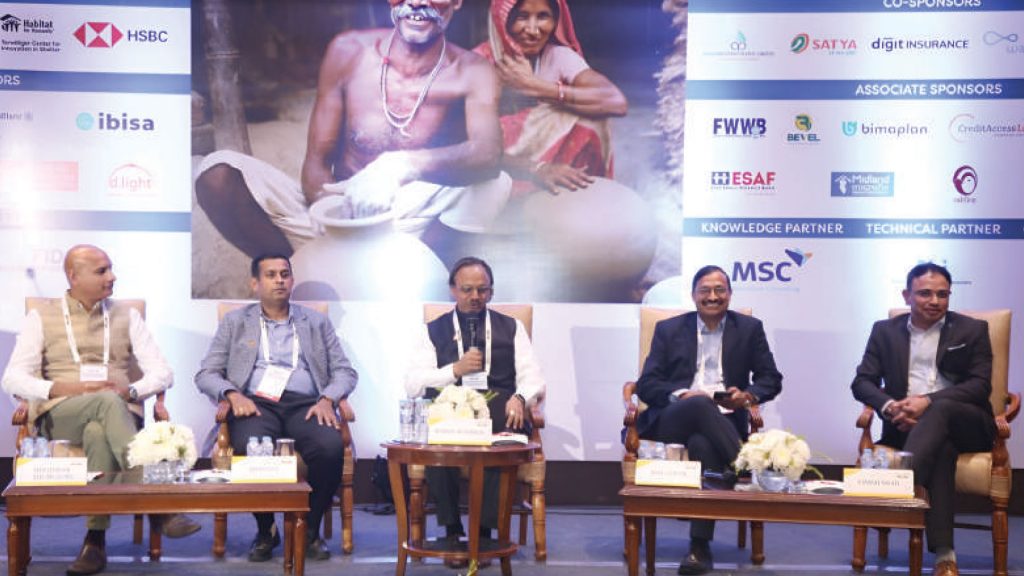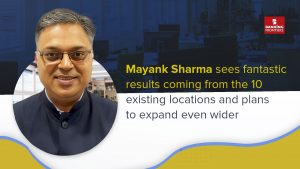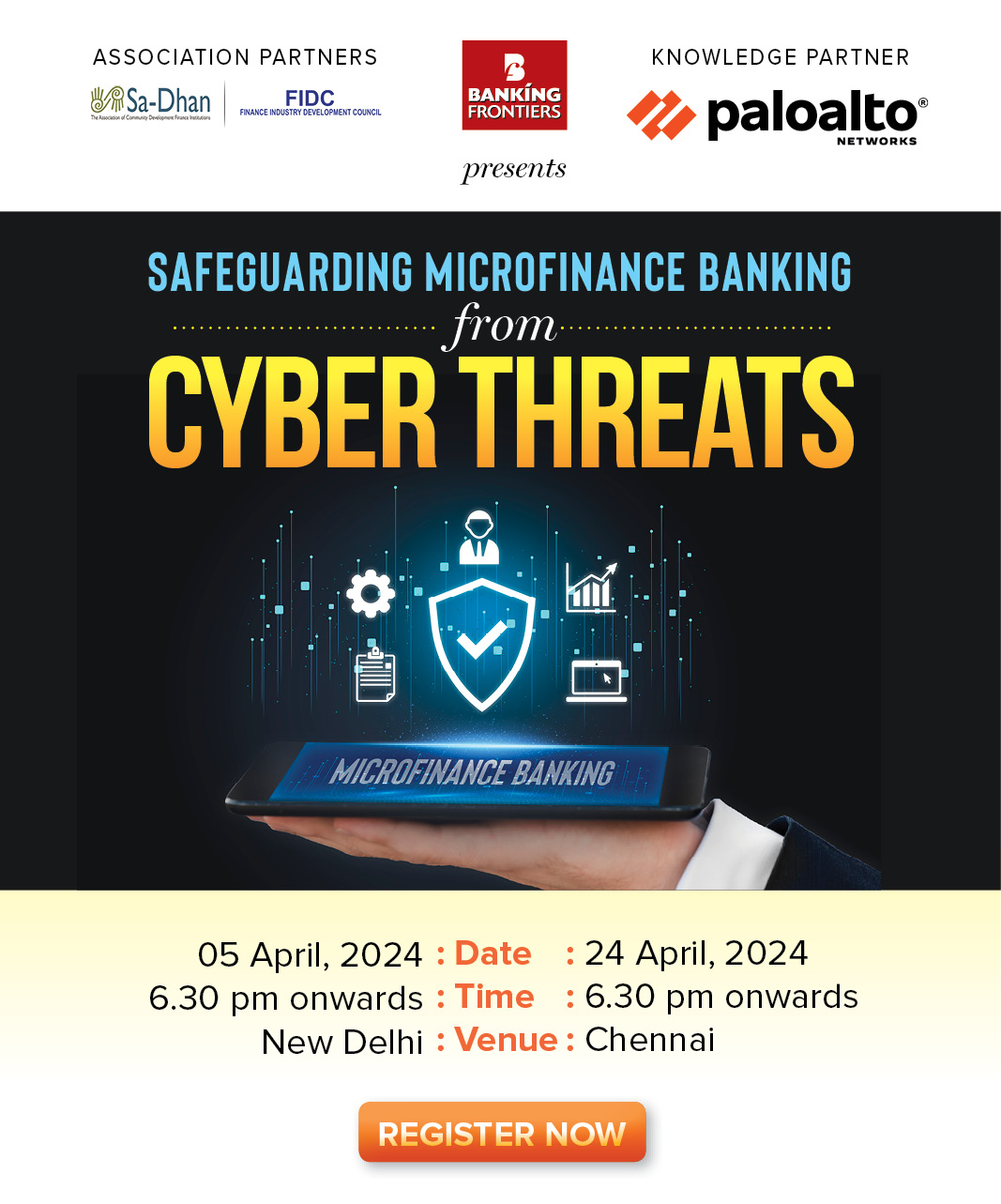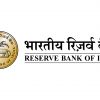On the silver jubilee of its formation, Sa-Dhan held its 18th annual conference on inclusive growth in Delhi in November 2023. One of the panel discussions was as titled as above. Edited excerpts:

Panelists:
- Shasidhar Thumuluri, MD & CEO, Sub-K IMPACT Solutions
- Martin P, COO, Ujjivan Small Finance Bank
- Anil Gupta, Partner – Payments & Distribution, MicroSave Consulting
- Vinish Shah, CBO, Craft Silicon
- Moderator: Manoj Agrawal, Group Editor, Banking Frontiers
Manoj: I am excited because of one word in the theme – exponential. It is not something that you see in daily life. Digital is common nowadays and technologies have been around for hundreds of years, but the exponential is uncommon. I’m going to try and figure out what really has happened in terms of leveraging technologies based on past experiences, public infrastructure and participation of fintechs. After that, we will get into the exponential stage. So, please describe one cutting edge or leading-edge technology that you have adopted and worked with in the recent past. What was the objective for adopting that particular technology and which customer segments where you’re focusing on for that technology?
Shasidhar: We sincerely believe that not all customers require touch or high tech. Many customers may not need any touch, some customers who may need a lighter touch and some customers need a heavy touch. Technology should be able to offer the right configuration when serving each customer. How do you do that? So, we said, let’s create an app for the customer which basically provides the customer a replica of a loan officer. Just as they see a physical person, now they see a digital assistant. But this digital assistant serves all that the loan officer is supposed to serve. It has the ability to pay in group, borrow in a group, interact in a group, etc, because we don’t want to disturb the grout tenet of the business. So, we designed our digital interfaces in such a way that the basic foundations of the business are not disrupted, but the approach is to use AI technologies to create this human-like interface in a digital environment.

Shasidhar Thumuluri emphasizes that technology should be able to offer the right configuration when serving each customer
We are now in the 3rd year of this journey. Digital collections have gone up to over 65%, digital onboarding has gone up, and 60-70% of the files are processed digitally. Even group meetings are digitized. We don’t necessarily conduct group meetings for those customers who pay fully on digital environment and interact with them though video or other options, Our goal is to keep in touch with these customers without disturbing them in the middle of the day when they are engaging in economic activity. For those who pay in cash, we have the traditional model. So, we try to customize the solution based on the customer preferences rather than painting all customer with the same brush.
Martin: Microfinance is a space where there is no end to innovation. There is a huge demand and the opportunity is how to make it accessible to the masses. We have gone one step beyond mobile app. When you see Youtube, you see ads in your regional language. What does this say? It says there is an audience who wants it in the regional language. So, what we have done is make our app based on voice, visual and video. So, when we started as a bank, we wanted to go beyond loans and open savings accounts. We gave them our traditional mobile app, but there was no uptake in spite of us explaining how the customers can replace branch visit with app usage. We closely observed the barriers for the customers and understood that these apps required them to be digitally literate. Then what we came up with voice enablement, where customer has to register one time, and then from there on, the customer speaks to their device and they can get services like loan statement, savings account balance, etc.
From where did we get this idea? We saw customers talking to their phones in Hindi. Convenience is the name of the game and it drives uptake. I think design thinking has to be used extensively in this area to come up with new digital solutions.
Manoj: What is the learning about using technology that makes it powerful and exponential in whatever use cases you’ve seen?
Vinish: We, being an IT company, were very skeptical when we designed our app for self-onboarding, because in microfinance, it is all high touch at the front end and the high tech is at the back end. So, we built a beta version and gave it to one of the small finance banks. We saw huge traction within just a couple of months, with 5000+ groups formed using full digital self-onboarding. Now we are lunching it in the market as a white labelled app. Second, what we have done is that based on our experience in offering a LOS, LMS and collections, we looked at regulator changes. Most softwares have a monolithic architecture with layers for database, logic and presentation. When you deploy any change in any one of these, you have to test everything and do end-to-end impact analysis. So, we started transforming our applications towards microservices based architecture which restricts the testing and minimizes the testing burden.
Anil: It’s very heartening to see that we are trying to shift some high-touch to high-tech. What most organizations have tried is moving paper procedures to digital procedures. But as a consultant, we know for sure and as a practitioner also, we have seen in many places, unless you start a journey of digital transformation, which we typically call digitalization, it is extremely difficult, because what will happen is that some of the processes will start breaking. Digital fundamentally means a very different thing. Digital means that I have the ability to do what I want you have the ability to do what you want. For example, instead of the bank setting limits on payments, each customer sets his/her own limits. That is exactly the power of taking digital to the last part of the spectrum. If we create digital and we offer the same thing to everyone – that’s the bigger problem. Secondly, a lot of icons that we use in our digital apps have been thrusted upon us. It was not very intuitive for us. Right now, we see the shopping cart as a very intuitive icon. It wasn’t the case 10 years back for many people who were not shopping in malls, especially in rural areas. Many icons which we feel are intuitive, are alien to others. Third, looking at the foundational change which is giving rise to exponential digital transformation in India, there are a few parts of the stack. One is that foundational id which has helped us acquire the customer and serve them at a fraction of the cost that we were incurring earlier. Earlier, it used to cost Rs300-400 to acquire a customer in the banking system, and now this cost has come down to Rs15-20. This itself has made it possible to serve the customer segment with higher profitability or lower cost.
Manoj: Let’s move on to the next context setting part, which is government initiatives like, Jandhan, IndiaStack, UPI, etc. Most of those are designed to promote financial inclusion. What have you seen as the ability to leverage these government platforms and what are the results?

Martin P says Ujjivan Bank has built customer experience in its mobile app on a foundation of voice, visual and video
Martin: There are 2 types of innovations which happen. One is compelled innovation, like what covid did – it compels everybody to think and work out a solution. The second is a good innovation like Aadhar, which has changed things entirely. We were fortunate Aadhar came when we were just transforming into a bank. It eliminated the need of paper and the confirmation that you are the same person, and the entire journey became digital using Aadhaar number. UPI surely would not have taken off in this manner if covid was not there to compel everybody to more away from cash. It is no cost to the consumer and there is no deduction for the seller. UPI has also made dormant accounts active, and thus made them viable for banks. Today we get about 30-35% of our repayments in their account as a QR code transaction. This data enables us to assess the customer for credit in a completely different way with a different kind of analytics.
Shasidhar: Broadly, we call UPI, Aadhar, etc, as digital public infrastructure. The government has done its part in laying the road in to the destination. Now it’s our responsibility to choose the vehicle to drive on it. Institutions like ourselves have to identify the opportunities within those and try and build on that. eKYC is a no brainer today, but in microfinance, eKYC is still not very common, there is still a paper-based KYC system. The change that institutions have to bring in is a bigger challenge than the availability of infrastructure or technological solutions. We should keep in mind that it is also not just change in technology, it is changing the mindset of everyone that is in this business. All customers with a smart phone have payment apps already and don’t need training. The point is, are we ready to actually receive that payment in a digital form or are we still going to send a person to collect the cash. The traditional method is not exponential.
Anil: Platforms are giving rise to more platforms and the like. One new platform is account aggregator, which allows you to fetch information of any user from any of the financial data silos. Second is OCEN which allows everything to come together and, with customer consent, you can offer them loans through a marketplace. Third, which is in the making and seeing decent traction is ONDC, ie Open Network for Digital Commerce. Eventually people use financial services for doing something. These new platforms are at different stages. The problem with UPI is that though there are 11 billion transactions every month, only 250-300 million are people using it compared to 600 million people with smartphones. So, at least 50% of people are still not using UPI. If you look at account aggregator, I think still it’s early days. These is enough traction and a lot of people are building it. We have done exceedingly well in building public infrastructure and probably we will see more and more public digital infrastructure in the future.
Vinish: IndiaStack is a blessing. We work with clients in over 30 countries, the max they have is credit bureau and ID verification. About 6 years ago, the lead time from prospect to disbursement was 8-12 days. Today, it is 3-4 days max. So that’s the advantage because all this validation through IndiaStack helps tremendously.
Manoj: Which exponential technology would you like to bet on? What impact will it create and in which area? If you will talk about AI, that is a very broad term, so please try to break it down into granular area.
Vinish: Within AI, we are building prototype is on based on NLP – natural language processing, in 2-3 specific areas. First is towards customer engagement and support. Internally we call this BankGPT with which customer can run any queries in any form with lot of correlation. This helps in cross-selling, upselling, engagement, etc. Second is risk profiling using NLP. These are areas where we see as heavy usage for AI in the coming year. We are very confident of the results.

Anil Gupta points out that many of the icons used in digital apps have been thrusted upon us and are not very intuitive
Anil: I would bet on customer experience as it is the core. This will be based on a few legs. One of the legs would be how we interact with customers. So, interaction has to be omnichannel. For customer who prefer language and speech, you have to build something on NLP. Our own experience in our research shows it has not been as good as or as great as people would like – because of noise, the way people use words, and the context. Even transliteration itself is becoming very difficult. There is a lot of work happening in this area, and things will definitely improve. However, CX has to be omnichannel. For example, if I’m in a crowd, I don’t want to speak, I want to chat. The second part of CX is how do we serve the customer, for which we have to build data analytics that can pick up alternate data if the customer allows, or to build AI on top of it, which could be generative AI. We are seeing really cool use case of using generative AI wherein we are putting in a large language models into practice and this probably can disrupt CX. So, I think these are the 2 major pillars which will give a boost to customer experience; this is where I would put my bet on.
Martin: Most of us use digital e-commerce platforms. If the journey is good and you get what you ordered, everything is good. The problem comes when what you ordered and what you received is not what you expect. If the service is faceless, it becomes difficult. On all these popular e-commerce sites, in case you are to return, it’s not as easy. So CX becomes very important as we are driving digital and driving efficiency. We are promoting video KYC where there is a face, and if anything goes wrong in the journey, the customer is able to connect with the bank immediately. The more the delay in resolution, greater the customer stress. So, customer experience is something which I would bet on completely and that will be the key for any digital approach to succeed.
Shasidhar: The microfinance business has mostly achieved paperless and will achieve cashless/cashlight sooner than later. The biggest reason why exponential growth is not perceivable in microfinance business is because of the fact that there is a human interface. The more you have people, the more the friction. A person can only serve a certain number of customers, and if you have to grow, you have to keep hiring. So, as long as you can make it presence-less to a majority of your customers, then exponential growth is possible, because then you will use your people to serve many more customers. I bet on one technology that will make it very possible – computer vision. Computer vision can read a lot of images and videos that customers themselves can upload, and our data models can underwrite their loan without sending a person out there to check the person’s house and shop and assets and stocks. A loan officer can go wrong because he/she is a human that makes a judgment. And there are thousands of loan officers making judgments every day. If you have one technology running on all the data, it makes one judgment, and the precision is much higher in terms of your ability to underwrite that loan. The second very important technology is GenAI. In microfinance business, we do a lot of mundane tasks in terms of processing files where no real application of mind is required. Can we not move that to machines and let GenAI take over? I think if you can put these 2 technologies to the work – computer vision and GenAI – I think you can exponentially grow the business. My team is experimenting on various technologies to identify your TV, fridge, etc, which will analyze the video that we will ask the customer to send of his home. Your system will instantly determine customer’s ability to repay or not. We are experimenting on some of these things and are at a very early stage.
Manoj: How much tech do you expect to develop inhouse? How much do you expect fintechs to play a role? How much do you expect bigtechs to play a role? What will be your journey with these 3 options in the coming years?
Shasidhar: We had very bad experience with IT vendors, so we made a call that we will build all the core technologies in-house and outsource or integrate all the commoditized technologies. It’s probably not the right thing for financial institutions to become tech companies, but we decided to become a tech company, because we thought that if we have a dream in our mind, then translating that dream to into their mind and then they develop a product and give it to me – it’s not going to be that easy. Doing it inhouse requires a lot of time and investment. For API-driven commoditized integrations, such as doing a validation or matching, we don’t need to build anything. They are all out there and readily available job. So good integrations and core in-house technology has become the way to go forward in our assessment.
Martin: I think we are completely different. We know how to assess the customer and we know what is the business we want to do. So, we believe in partnerships to use the best of what is available. We use a combination of bigtechs and fintechs to see how quickly and efficiently we can do it right. One should look for partners who can work with you and understand your business. Then it is a win-win model.
Manoj: What must really be looked at while planning for exponential is regulation and governance. If the regulator says no to a certain way that you want to do something, or if governance makes it difficult to achieve what you want, then being exponential is of no use. How do you see financial organizations putting in governance for exponential technologies to avoid crash landing?

Vinish Shah keeps regulation into account and recommends that technology must be very flexible and have openness in it to adapt to tomorrow’s frameworks
Vinish: Taking regulation into account, consciously the technology has to be very flexible. We cannot be very stringent; we need to have the openness in it so that if tomorrow certain framework comes in, then we should be able to adapt to it.
Anil: Regulations are going to stay for sure. A lot of technology governance that I see in organizations is being driven by businesses. Businesses typically want do something very quickly and that is where governance slippages are happening. If there is a major break, then the regulator comes in, and there are many such examples. So, we need to be very careful, particularly in regulated spaces. Businesses shouldn’t be doing so much business that they completely overrule the technology part of it. We have to build those safeguards and it takes time. Ultimately it is a business call to stop the business or to take the risk.
Manoj: Give us a little bit of a futuristic perspective on technology governance.
Shasidhar: In my mind, everybody is learning, even the regulator is learning. I do not think there is any intention for any regulator to put a brake on your business. The regulator comes to know about the problem when the problem occurs. Even microfinance regulation came out of the microfinance crisis. With all due respect to the regulator, they are also like us, they are also learning this game. They are not experts in everything. The idea of regulator or governance is to make sure that you are doing things in the right way and only when somebody makes a mistake, you know it is not the right way to do that. You have to allow mistakes to happen, but not big mistakes. If some mistakes happen, all of us as an industry will learn from it and the regulator will then know what to regulate and what not to regulate, so they don’t take a harsh stand and put a brake on the whole business. So, we should keep making some mistakes. There’s nothing wrong in that as long as there are not very costly mistakes. All of us, along with regulator, will also learn with it. Accelerated learning is the way to go. Now there are regulatory sandbox options for these experiments.
Martin: There is no option but digitization. And at the same time with data protection laws coming in, you don’t know what is going to get complicated. There is a big investment in digitization. I think some amount of a closed user group testing can be done just to ensure that no blatant kind of breaches are done. I fully agree we should fail fast so that can learn quickly.
Manoj: So, the final bottom line from this entire session can be “Let’s make exponential as the new normal.” Thank you everyone.
Read More:
Sampath Bank, a local bank, yet tech savvy

Insurance Agenda 2024: Fast & Frictionless









